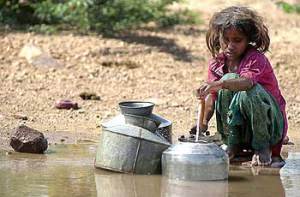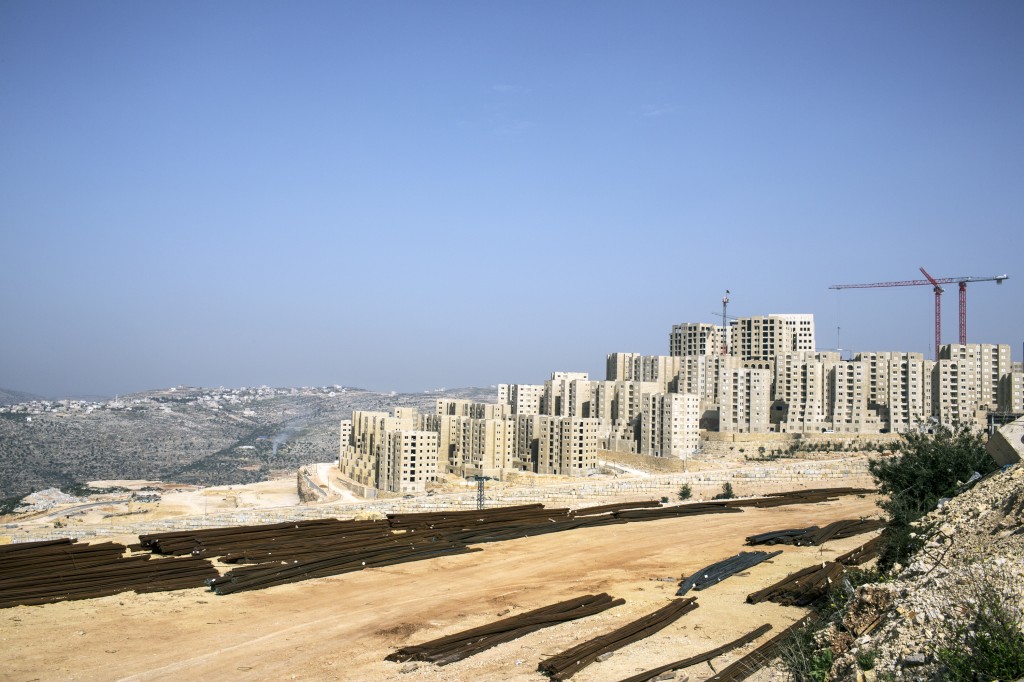March 23, 2015 – Yesterday was World Water Day. This day, mandated by the United Nations, is meant to focus on the importance of freshwater to humanity. The truth of course is with our human population continuing to grow and freshwater a finite resource, we are heading for a crisis of our own making.
Water has always been fought over, from the earliest watering holes to political control over river valleys. Empires have risen on river banks. In dry climates and deserts oases and wells have been the lifeblood of tribes and have been guarded with zeal.
In 2015 more than 750 million people on this planet lack access to clean freshwater. Another jolting statistic, 2.5 billion of humanity is exposed to unsanitary conditions making them more susceptible to cholera and other waterborne infectious diseases.
And then politics and ideology enter the picture in places such as Rawabi, Palestine, the first planned city (see image below) in the future West Bank state, denied freshwater access by the Israeli government until this last month when Israel finally relented. The reasons for past denials – military security.
Water and politics have been the subject of headlines in the American Southwest with cities, farmers, ranchers, and energy utilities fighting each other over the dwindling freshwater resources of the Colorado River basin.
And if freshwater from river sources being compromised isn’t enough, we have aquifers around the globe being tapped at unprecedented rates. Take for example the water demands of the market garden economy of the Central Valley of California. This location produces most of the fruit and vegetables North Americans eat. Farmers and cities in the Central Valley have been combating a decade long drought by pumping water from ever deepening wells at unsustainable rates. Meanwhile the breadbasket of the United States, the Midwest has been draining the Ogallala Aquifer at unsustainable rates since the mid-1970s. In a recent study consumption of underground aquifers today was 3.5 times greater than the ability of those aquifers to replenish themselves.
Water starved Sao Paulo, Brazil, is a mega city, with a population of 23 million, in danger of ceasing to exist. The area has experienced its worst drought in 80 years. In the last few days heavy rains fell on the city but the parched ground could not handle the deluge leading to massive floods and no relief for the city’s inhabitants who cannot get freshwater to run from kitchen and bathroom taps. The irony is this. Brazil is home to 12% of the world’s freshwater resources.
In Southeast Asia, Laos is building hydroelectric dams on the Mekong River that are diminishing the water flow to communities and farms in Vietnam and Cambodia. China is building dams on the Brahmaputra River to generate power and provide flood control while impacting the 30 million who live downstream in India and Bangladesh. Similar Chinese projects in the Tibetan plateau are impacting people who reside along the banks of the Salween River, an important downstream freshwater resource for Myanmar.
The World Health Organization (WHO) has established acceptable water requirements for every living being on the planet – between 7.5 and 20 liters per day to cover our domestic needs. Now add the needs of livestock, agriculture, world wildlife, industry, and energy companies and you begin to understand just how finite is the resource. Of course we have technology to help us to some degree but the solutions are very expensive. The cost of a single desalination plant runs into billions of dollars with a shelf life of twenty years before requiring major refits, a solution for the rich, not the poor.
In the 20th century two world wars were fought. The first was a struggle about empire and world dominance. The second war was a do over with issues of ideology, race and energy added to the mix. In the 21st century freshwater looks like the lightning rod for future wars.
In his 2010 published book “Water: The Epic Struggle for Wealth, Power and Civilization,” author Steven Solomon writes,
“Consider what will happen in water-distressed, nuclear-armed, terrorist-besieged, overpopulated, heavily irrigation dependent and already politically unstable Pakistan when its single water lifeline, the Indus river, loses a third of its flow from the disappearance from its glacial water source.”
Solomon describes India’s Ganges, China’s Yangtze and Huang-ho, South Asia’s Mekong, and Africa’s Nile – all flash points for future conflicts as populations pressed to create more food and raise living standards draw on these diminishing freshwater resources with nations fighting each other to sustain themselves. Unlike the water wars of the U.S. Midwest and Southwest, the weapons of choice will not be legislation and words, but guns.





















